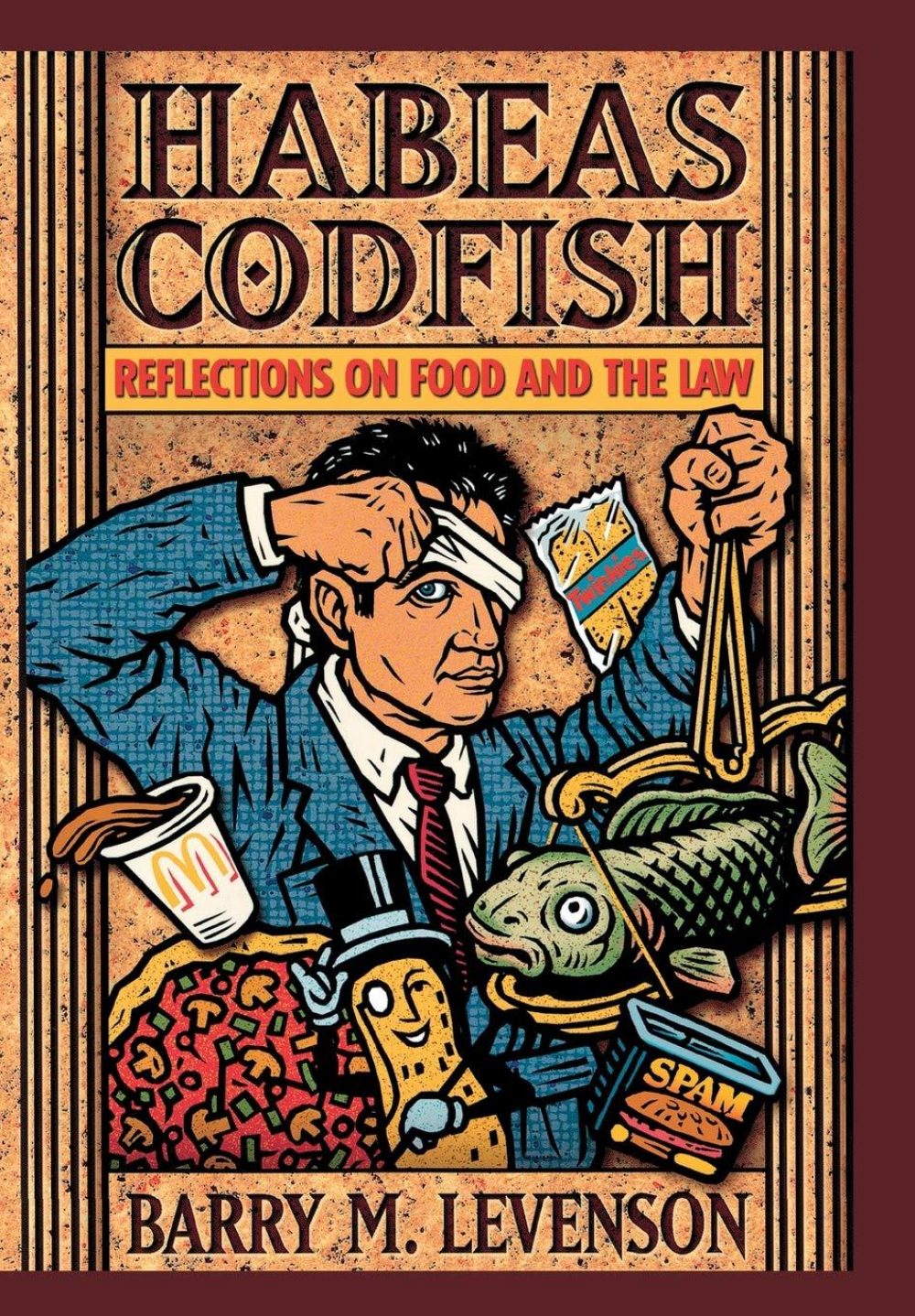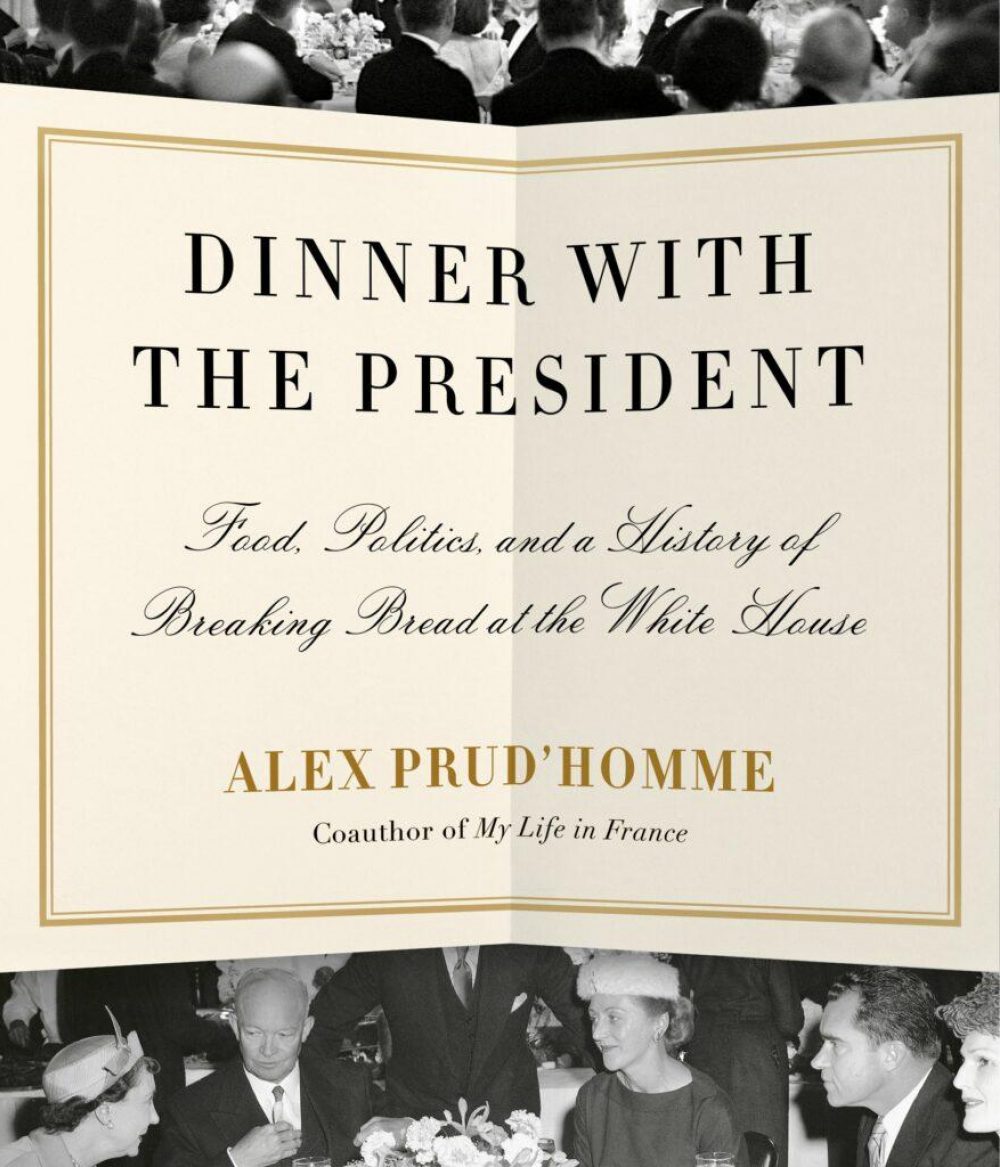Habeas Codfish
By Barry M. Levenson
In 1925, Wisconsin passed a law that made it illegal to make, sell or possess margarine, punishable by fines up to $500 and jail time. Welcome to food and the law. “Habeas Codfish” offers a fascinating look at how courts have tried to adjudicate culinary issues throughout history. In the Middle Ages, English laws made it illegal to adulterate bread. The U.S. courts have tried to define peanut butter, ice cream and ketchup to help settle labeling issues. In liability cases, a woman slipped on a banana peel in a Kroger market and won $400 (reversed on appeal), and judges have delineated a test for unwelcome surprises in foods—a nail, chicken bone or, in one case, a human toe—by allowing natural substances (for example, a fish bone in fish chowder) but not foreign substances (the aforementioned toe) under the legal theory of “reasonable expectations.” Before the 1930s, a consumer could not sue a manufacturer because no binding contract existed between the two of them. Some consumers have sued due to “loss of enjoyment”—a bad jar of applesauce provoked one mother to sue on behalf of her sons, who were traumatized to the point that they could never enjoy applesauce again. And the First Amendment has protected even the most heinous restaurant reviews, such as one referring to a fish course as “trout à la green plague.” “Habeas Codfish” also is full of trademark infringement cases, including McDonald’s—is “Mc” part of their trademark?—and the anthropomorphic use of the peanut (Mr. Peanut versus Crown Nut). Perhaps the most interesting cases are on the periphery of the world of food. Dan White, who shot San Francisco Mayor George Moscone and Supervisor Harvey Milk, employed what came to be known as the “Twinkie defense,” claiming his consumption of sugary foods played a part in his diminished capacity—he was unable to act with premeditation. (He was convicted of a lighter offense, voluntary manslaughter). And regarding suits by prisoners about prison food, the law has ruled, “De gustibus non est disputandum”—in other words, “You can’t argue over taste.”
Buy on Amazon
Dinner with the President
By Alex Prud’homme
You may know Alex Prud’homme as the co-author of Julia Child’s excellent memoir, “My Life in France.” (Child was also his great-aunt.) In “Dinner with the President,” Prud’homme mines the long and fascinating history of White House chefs. In the early days, for example, the president and first lady had to rent their own mansion and pay for the food and beverages for receptions. Both George Washington and Thomas Jefferson enjoyed the amazing culinary skills of famous but enslaved chefs Hercules Posey and James Hemings. Hemings once served capon stuffed with Virginia ham, chestnut purée, artichoke bottoms and truffles simmered in chicken stock. Some of our presidents, however, had baser palates. James Garfield and Dwight Eisenhower had a taste for squirrel soup, William Howard Taft was fond of possum, and George W. Bush liked ballpark hot dogs and grilled cheese made with Kraft Singles. The White House’s worst food was served under the aegis of Eleanor Roosevelt, whose housekeeper’s signature dishes included jellied prunes with cheese or liver with string beans. And of course, there was the odd disaster. At the 1943 Tehran Conference, the ice cream dessert melted, slumping onto the head of the Russian translator. Gerald Ford’s dinner for Queen Elizabeth was perhaps the most embarrassing White House event. Captain & Tennille sang “Muskrat Love,” and the first dance was to “The Lady Is a Tramp.” And Prud’homme solves the mystery of George Washington’s teeth. His dentures were made from cow and human teeth, lead, steel and gold, and were so painful, he rarely smiled and preferred soft foods such as pickled tripe. (Stained by his copious consumption of Madeira, his teeth only appeared to be made of wood.) And, finally, Ronald Reagan used jelly beans as a test of character. “You can tell a lot about a fella’s character by whether he picks out all of one color or just grabs a handful.” Amen.








